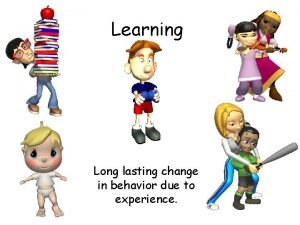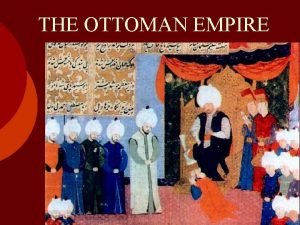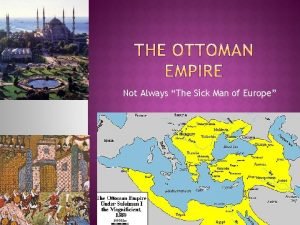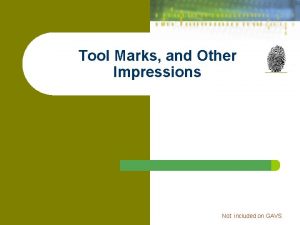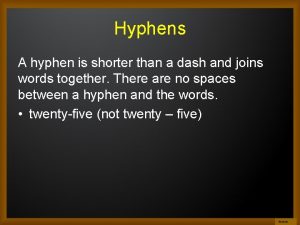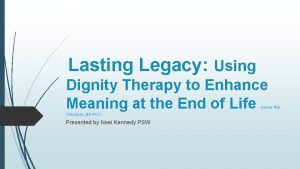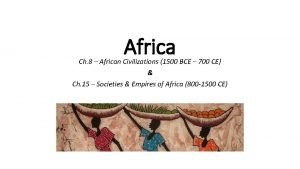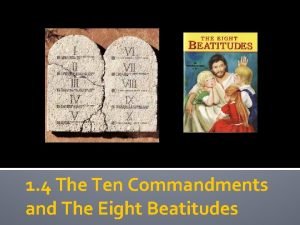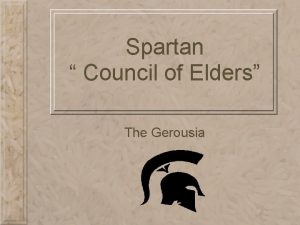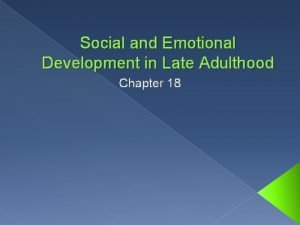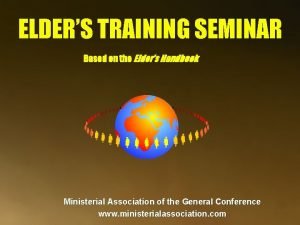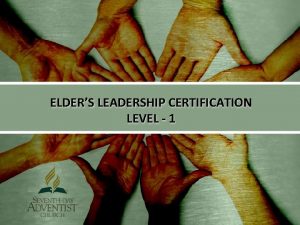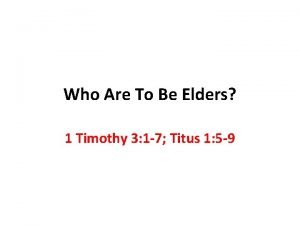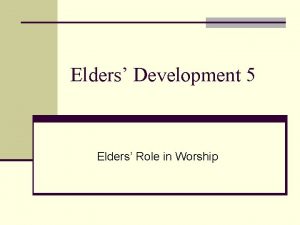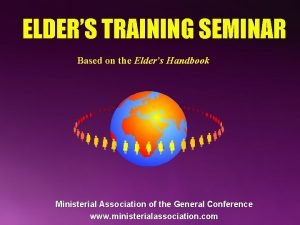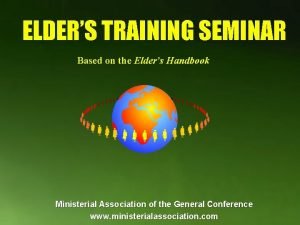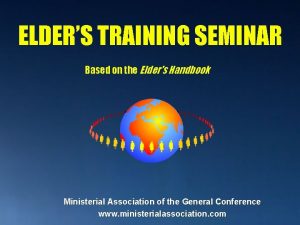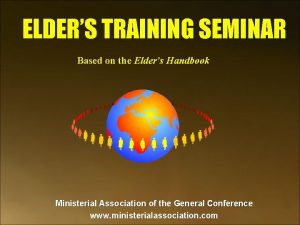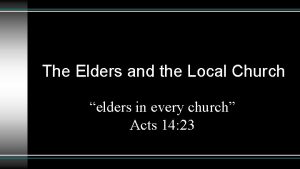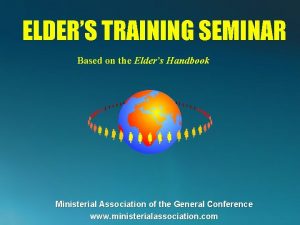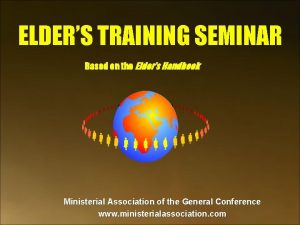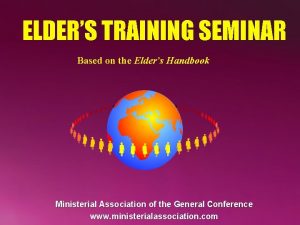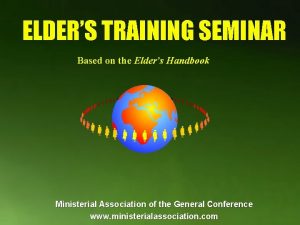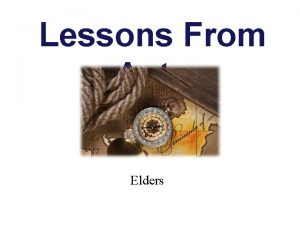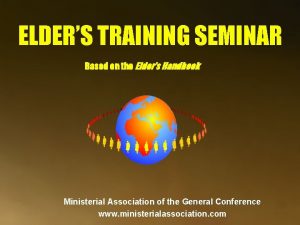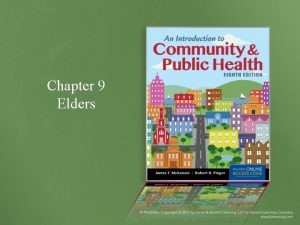Growing Elders Making lasting change through research with




















- Slides: 20

Growing Elders Making lasting change through research with Canadian Aboriginal communities


Case Study #1 The Dogrib Tåîchô communities, Northwest Territories

“We have to act now like we are in crisis. . . we have to act now as if it is 25 years from today, as if the people in this room are now the Dogrib elders. . . what will you need to know in 2031 about who you are, where you have come from. . . so that you can teach your children. . . ”

Workshop #1: Living Daily as a Dogrib

The indicators Provide service to others Follow little rules Have tea with one another Listen to stories Travel slowly on land Share food with families Living Daily as a Dogrib Observe to learn Speak Dogrib Celebrate Dogrib activities Practice spirituality Set nets Sew Trapping Prepare a campfire Hunt and prepare meat

Workshop #2: Traditional values for policy

Song of Nöhtà: the Grebe As he chanted this song, he began to dance. The song Nöhtà came up with lasted until the tea dance ended. He had been traveling from a great distance and so, he was very tired and very sleepy too. After introducing a song for the people, he decided to sit down. While the people danced, he sat down behind them. As he was sitting down, he fell asleep. As he drifted into a deep sleep, the people danced and they danced on his feet and that’s why his feet became flat. So that was how Nöhtà came up with this song and that’s what the old timers say. EVIDENCE Determination Styles of leadership Connection to the earth & people Importance of elder’s knowledge THEMES

What now? Themes Practice Determination Styles of leadership Connection to the earth & people Importance of elder’s knowledge How can we apply themes we have found in traditional stories and songs to Tlicho governance?

Values/Policies for Environment • Scheduling or rotating use of land • Considering quotas for hunting; Hunting should be only for survival hunting on land • Regulating use by outsiders on Dogrib lands • Land use planning

Values/Policies for Child Protection • Develop new evaluation criteria to recognize culture and lifestyle • Develop process that reflects community • Train Dogrib social workers • Elders involved in teaching traditional values to families (re-education)

Summary: Elements of success… • • • Leadership involvement and commitment Culture is central Working with Elders Planning for the next generations The power to implement the results in policy and programs

Case Study #2 The Métis Settlements of Alberta

The process • • • The invitation Leadership commitment Data sharing agreement Elders’ Advisory Committee Recruitment of Community Researchers

Training workshop #1: Conducting the survey

Training workshop #2: Data entry and cleaning

In August… • • • Training session #3: analysis Strategies for dissemination Informing the leadership of findings Working through implications Planning programs and policies

Summary: Elements of success • Leadership commitment • Open process, e. g. data-sharing agreement • Committed CAs • 2 CAs from each community • Multiple communities with common issue • Incorporation of culture

Case study #3: When not to do research

 Latent learning
Latent learning Longest running empire
Longest running empire What is the longest lasting empire
What is the longest lasting empire Short constructed response rubric
Short constructed response rubric Factors that influence desired service expectations
Factors that influence desired service expectations A long-lasting, paper-like material made from reeds
A long-lasting, paper-like material made from reeds 4.05 quiz footwear and tire marks
4.05 quiz footwear and tire marks Lasting legacy of the roman empire
Lasting legacy of the roman empire Eight year old hyphen
Eight year old hyphen Lasting legacy meaning
Lasting legacy meaning Lasting impacts of the new deal
Lasting impacts of the new deal Lasting contributions of rome
Lasting contributions of rome What lasting legacies did the aksum kingdom leave
What lasting legacies did the aksum kingdom leave The commandments number 1-4
The commandments number 1-4 Sparta council of elders
Sparta council of elders Socioemotional selectivity theory
Socioemotional selectivity theory Revelations chapter 4
Revelations chapter 4 Bronson intranet
Bronson intranet Church elders training
Church elders training Elders digest
Elders digest Qualifications for elders 1 timothy
Qualifications for elders 1 timothy
